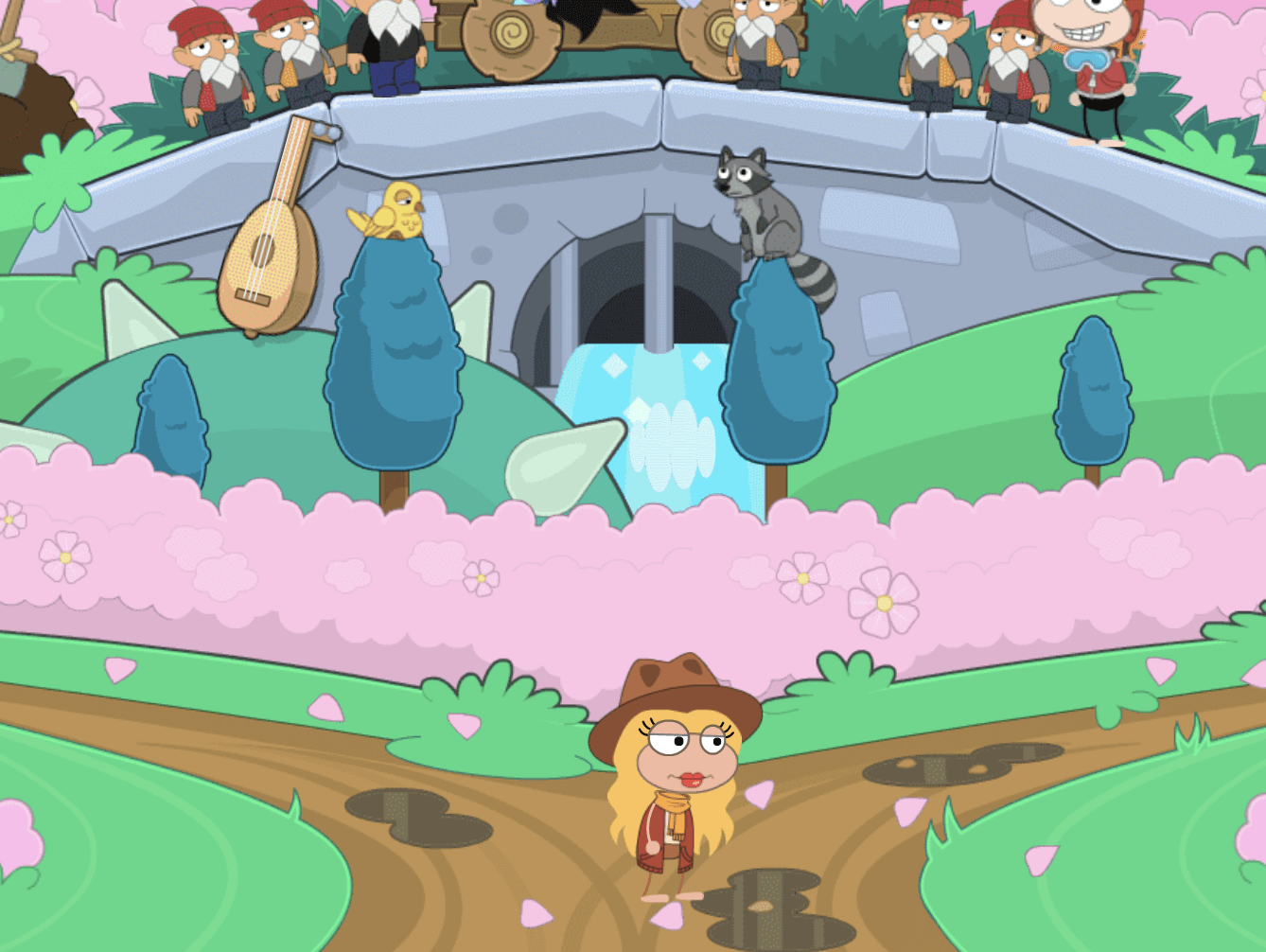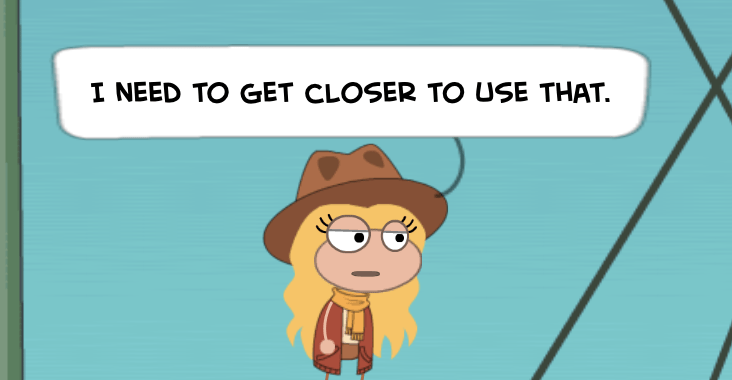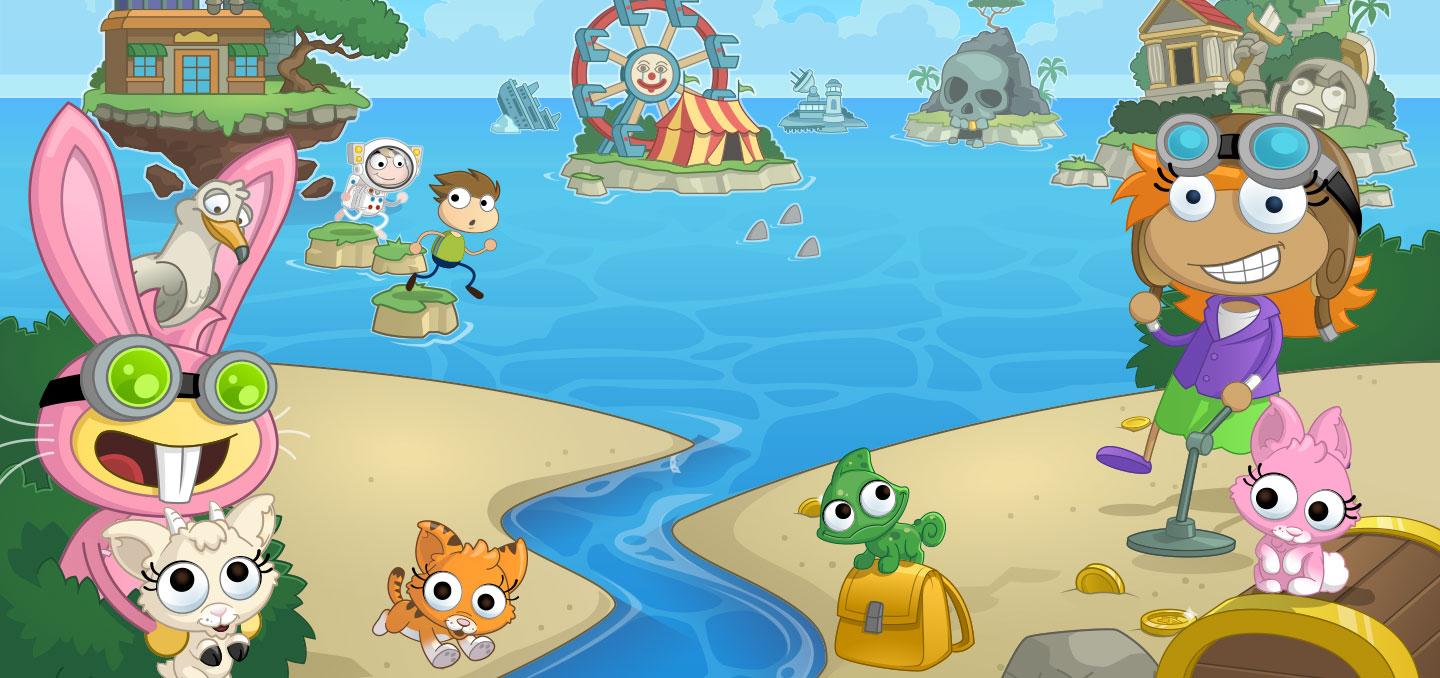This week, I played Poptropica: It was developed in 2007 by the Pearson Education’s Family Network, and Jeff Kinney (author of Diary of a Wimpy Kid). The target audience is kids ages 6-15. It is a puzzle game that makes users solve a series of chronological, narratively-themed puzzles in order to finish each “island”. It is primarily a puzzle game, where the puzzles can be both physical and logical. I will discuss how the mechanics of the puzzles affected my experience of the game.
The actual mechanics of user interaction with the game are quite simple. A user can move left or right, jump, duck, and interact with people or characters by clicking on them. Things that are clickable can be moused over with a hand rather than the regular cursor, and places that are jumpable are typically shaded a bit more forward, and outlined in black (pictured below). These simple mechanics let the puzzles shine: rather than focusing on complex movements or keystrokes, the user is immersed in the enacted world (from the lecture on 4 types of game worlds).

We can see some elements are “jumpable” whereas others are not. There are also lots of things to click on (people, animals, guitar, etc.)
Tying this back to loops and arcs, the learning of the mechanics is accomplished through loops– we start each island with easy quests that familiarize us with the rules of that specific island. For example, on Atlantis island, one of the first quests is moving a submarine underwater instead of just walking and jumping. All these quests– loops– tie together in arcs. For example, on Atlantis, the first few quests have the user talking to people, finding the keys to a submarine, and exploring underwater; all together, these quests form an arc that outlines the tone and incentive structure of the island. Like last week, this functions well.
Most notably, there are no explicit instructions on what to do. The user must just run around interacting with things, figuring out for themselves what the next step in the narrative must be. The most instructional part of the game is the dialogue of other characters (pictured below), which usually hints at the right direction. In keeping with this feeling of exploration, there are very few limited resources in the game. Some of the puzzles (e.g. navigating a maze with “slappy plants”) involve an element of limited time, but if you fail, you can always restart. There are no lives in the puzzles. So, to encourage exploration, most resources are unconstrained.

This bit of self-dialogue told me during a puzzle that I needed to try a different approach.
These mechanics all contribute to the two main aesthetics which framed my experience of the game: Discovery and Narrative. The user finds the puzzles by exploring the island and interacting with everything in sight. They are motivated to do so because of the underlying narrative. The game would be boring without the puzzles; but just the puzzles themselves are not enough to make the game interesting. There is always a narrative tied in with the puzzles. As a player, I was invested in the plot, thought all the puzzles made sense and were satisfying to solve, and found them very funny. So, this game remains a huge success.

The puzzles never exist in isolation. As we can see above, they are always motivated by narrative.




